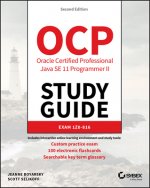
Code: 08243104
Evaluation of Formate as an Electron Donor to Facilitate Palladium-Catalyzed Destruction of Chlorinated Aliphatic Hydrocarbons
by Matthew D Welling
Chlorinated aliphatic hydrocarbons (CAHs) such as trichloroethylene (TCE), tetrachloroethylene (PCE), and trichloroethane (TCA) are probable human carcinogens that have been used widely within the DoD, primarily as solvents for cl ... more
- Language:
 English
English - Binding: Paperback
- Number of pages: 198
Publisher: Biblioscholar, 2012
- More about this

You might also like
-

Christianity, Education and Modern Society
117.70 € -
![Tragedy of Sertorius, Etc. [In Verse.] Tragedy of Sertorius, Etc. [In Verse.]](https://media.libris.to/jacket/08010257t.jpg)
Tragedy of Sertorius, Etc. [In Verse.]
19.51 € -

Klimt Connection
16.96 € -

Root of All Healing
11.58 € -18 % -

Collision
26.52 € -2 % -

Destiny's Fight
12.80 € -

Book Deal
20.62 € -4 %
Give this book as a present today
- Order book and choose Gift Order.
- We will send you book gift voucher at once. You can give it out to anyone.
- Book will be send to donee, nothing more to care about.
More about Evaluation of Formate as an Electron Donor to Facilitate Palladium-Catalyzed Destruction of Chlorinated Aliphatic Hydrocarbons
You get 150 loyalty points
 Book synopsis
Book synopsis
Chlorinated aliphatic hydrocarbons (CAHs) such as trichloroethylene (TCE), tetrachloroethylene (PCE), and trichloroethane (TCA) are probable human carcinogens that have been used widely within the DoD, primarily as solvents for cleaning and metal degreasing. These compounds are frequently found to be groundwater contaminants. In fact, TCE and PCE are the first and third most commonly detected groundwater contaminants nationwide. The focus of this study was to determine the effectiveness of using a palladium (Pd) catalyst with formate as a reductant to treat CAH-contaminated groundwater. TCE was used as a model CAH. Other investigators have focused on hydrogen gas (H2) as a reductant to treat CAH-contaminated groundwater. However, when using H2 as a reductant, catalyst deactivation is observed due to the production of hydrochloric acid. In this study, formic acid was used as the reductant, resulting in no observed catalyst deactivation even at high contaminant concentrations. Reaction rates achieved when using 100% H2 as a reductant could be matched by using 4 mM (184 mg/L) formic acid. At increased formic acid concentrations, system performance exceeded performance achievable when using H2. It is also noted that while hydrogen is an explosive, low solubility gas, formic acid can easily and safely be added to contaminated water. The aforementioned work has shown that this method for treating CAH-contaminated groundwater by using formic acid and a Pd-catalyst is more efficient, safe, and less costly than using hydrogen gas as a reductant.
 Book details
Book details
Book category Knihy po anglicky Society & social sciences Education
60.37 €
- Full title: Evaluation of Formate as an Electron Donor to Facilitate Palladium-Catalyzed Destruction of Chlorinated Aliphatic Hydrocarbons
- Author: Matthew D Welling
- Language:
 English
English - Binding: Paperback
- Number of pages: 198
- EAN: 9781288313860
- ISBN: 9781288313860
- ID: 08243104
- Publisher: Biblioscholar
- Weight: 363 g
- Dimensions: 246 × 189 × 11 mm
- Date of publishing: 01. November 2012
Trending among others
-

AQA GCSE German Higher Practice Papers
15.54 € -

Cambridge IGCSE (R) & O Level Complete Chemistry: Student Book Fourth Edition
42.38 € -

Oxford IB Diploma Programme: IB Economics Course Book
62.10 € -

Business Partner B1+ Workbook
16.76 € -4 % -

Cambridge IGCSE (R) & O Level Complete Physics: Student Book Fourth Edition
38.62 € -

OET Preparation
9.75 € -

Oxford IB Diploma Programme: IB Theory of Knowledge Course Book
63.42 € -

Speed and Accuracy: Multiplication
8.53 € -

Pearson Edexcel International GCSE (9-1) English Language B Student Book
50.81 € -

KS3 Maths 10-Minute Weekly Workouts - Year 7
8.02 € -9 % -

KS3 Maths 10-Minute Weekly Workouts - Year 8
8.02 € -9 % -

Read Write Inc. Phonics: Red Ditty Book Bag Books (Mixed Pack of 10)
75.11 € -

Dancing Heads
13.10 € -19 % -

Freiarbeitsmaterial für die Grundschule - Deutsch - Klasse 1/2
23.06 € -4 % -

Business Partner B1 Workbook
17.37 € -9 % -

Business Partner B2 Workbook
16.76 € -4 % -

Blue Book of Grammar and Punctuation: An Easy- to-Use Guide with Clear Rules, Real-World Examples , and Reproducible Quizzes, Twelfth Edition
15.14 € -29 % -

Grade 9-1 GCSE Maths AQA Revision Question Cards - Higher
10.15 € -4 % -

Positive Discipline Tools for Teachers
14.53 € -24 % -

Speed and Accuracy: Division
8.53 € -

Pearson Edexcel AS and A level Mathematics Statistics & Mechanics Year 1/AS Textbook + e-book
17.98 € -

(ISC) SSCP SG & SSCP Practice Test Kit, 3e
65.55 € -28 % -

Motivation and Reinforcement
46.54 € -

Imagine If...
10.87 € -24 % -

Vertical Academy
36.79 € -

OET Reading Subtest Preparation
12.70 € -7 % -

Oxford International Primary Maths Second Edition: Practice Book 1
16.15 € -

Vol 2 Blackletter Lettering Adventures
25.40 € -2 % -

AS & A Level Maths For Dummies
17.27 € -28 % -

CompTIA Security+ Review Guide - Exam SY0-601
24.79 € -25 % -

Forensic Linguistics Articles
15.34 € -

Practical Guide on Veterinary First Aid using Homeopathy
14.93 € -2 % -

Abolition of Man
18.69 € -2 % -

Human Landscapes from My Country
28.96 € -21 % -

Corrected Squares of The Book of Abramelin
533.64 € -

Hanbo Jutsu: Use of Hanbo, Cane and Walking Stick for Self Defense
11.37 € -

Reading Mind - A Cognitive Approach to Understanding How the Mind Reads
21.44 € -29 % -

Exam Prep for Microeconomics by Pindyck & Rubinfeld, 6th Ed.
40.55 € -

North Korea's Military Threat
25.71 € -

English Language & Literature WORKBOOK: York Notes for GCSE (9-1)
9.04 € -9 % -

Release Your Inner Drive
15.24 € -18 % -

Effect of Registration Errors on Tracking in a Networked Radar System
60.37 € -

Princeton Review SAT Premium Prep, 2021
43.09 € -4 % -

CEH v11 Certified Ethical Hacker Study Guide + Practice Tests Set
75.31 € -5 % -

10 Practice Tests for the SAT, 2021 Edition
31.91 € -

OCP Oracle Certified Professional Java SE 11 Programmer II Study Guide - Exam 1Z0-816 and Exam 1Z0-817
49.70 € -6 % -

Scrum - A Pocket Guide - 2nd edition
34.55 € -

Powerful Teaching: Unleash the Science of Learning
27.03 € -25 % -

Physics for You
51.73 €
Osobný odber Bratislava a 2642 dalších
Copyright ©2008-24 najlacnejsie-knihy.sk Všetky práva vyhradenéSúkromieCookies



 21 miliónov titulov
21 miliónov titulov Vrátenie do mesiaca
Vrátenie do mesiaca 02/210 210 99 (8-15.30h)
02/210 210 99 (8-15.30h)